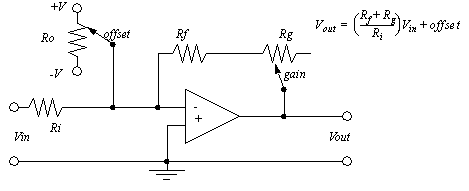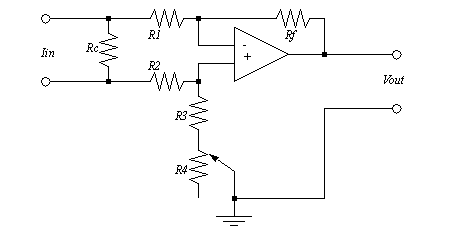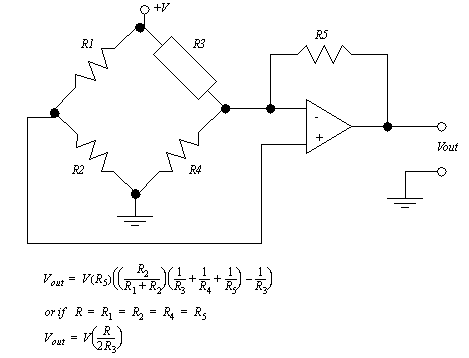INPUT ISSUESSignals from transducers are typically too small to be read by a normal analog input card. Amplifiers are used to increase the magnitude of these signals. An example of a single ended signal amplifier is shown in Figure 22.1 A Single Ended Signal Amplifier. The amplifier is in an inverting configuration, so the output will have an opposite sign from the input. Adjustments are provided for gain and offset adjustments. 

Figure 22.1 A Single Ended Signal Amplifier A differential amplifier with a current input is shown in Figure 22.1 A Current Amplifier. Note that Rc converts a current to a voltage. The voltage is then amplified to a larger voltage. 
Figure 22.1 A Current Amplifier The circuit in Figure 22.1 A Differential Input to Single Ended Output Amplifier will convert a differential (double ended) signal to a single ended signal. The two input op-amps are used as unity gain followers, to create a high input impedance. The following amplifier amplifies the voltage difference. 
Figure 22.1 A Differential Input to Single Ended Output Amplifier The Wheatstone bridge can be used to convert a resistance to a voltage output, as shown in Figure 22.1 A Resistance to Voltage Amplifier. If the resistor values are all made the same (and close to the value of R3) then the equation can be simplified. 
|